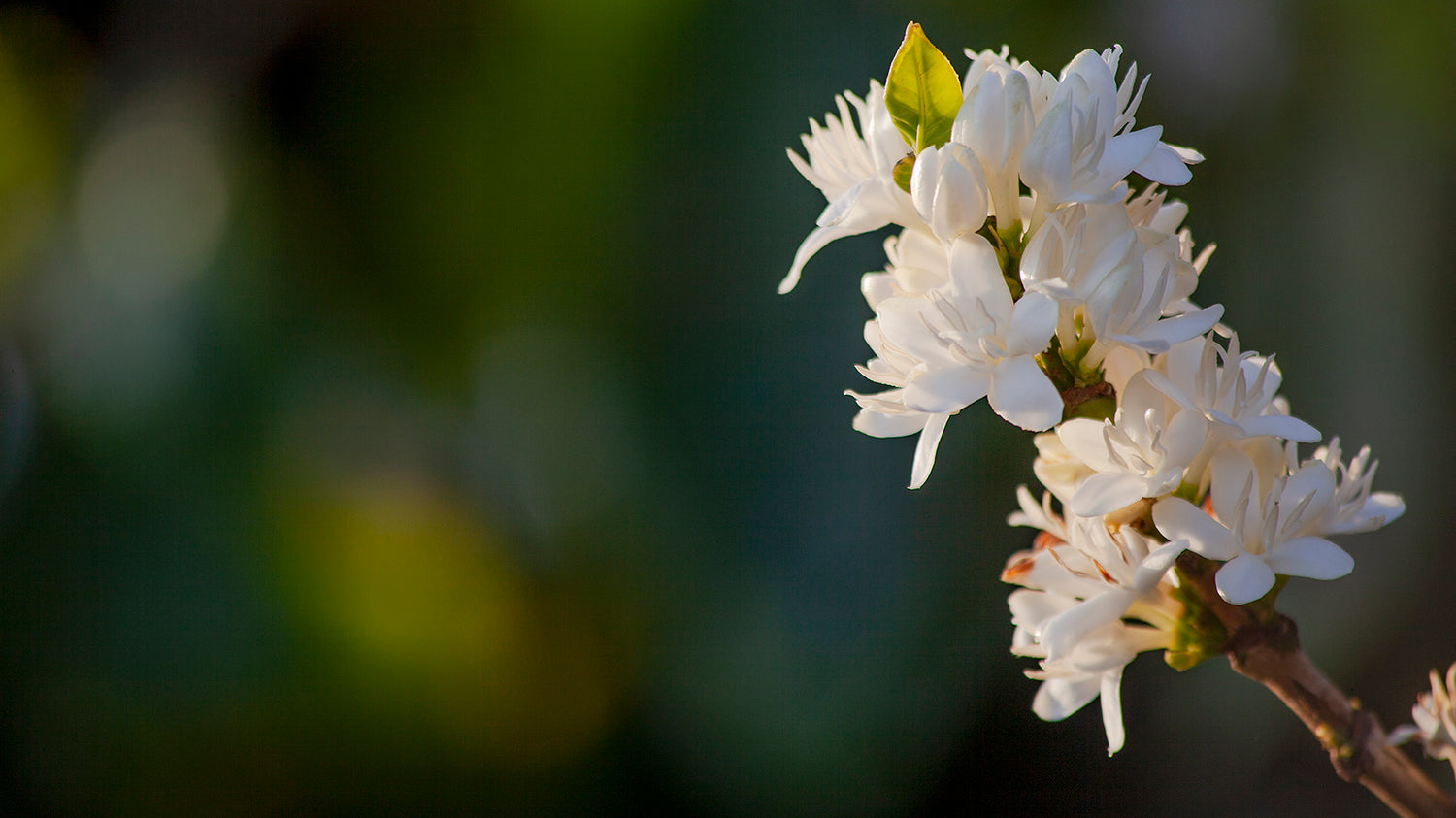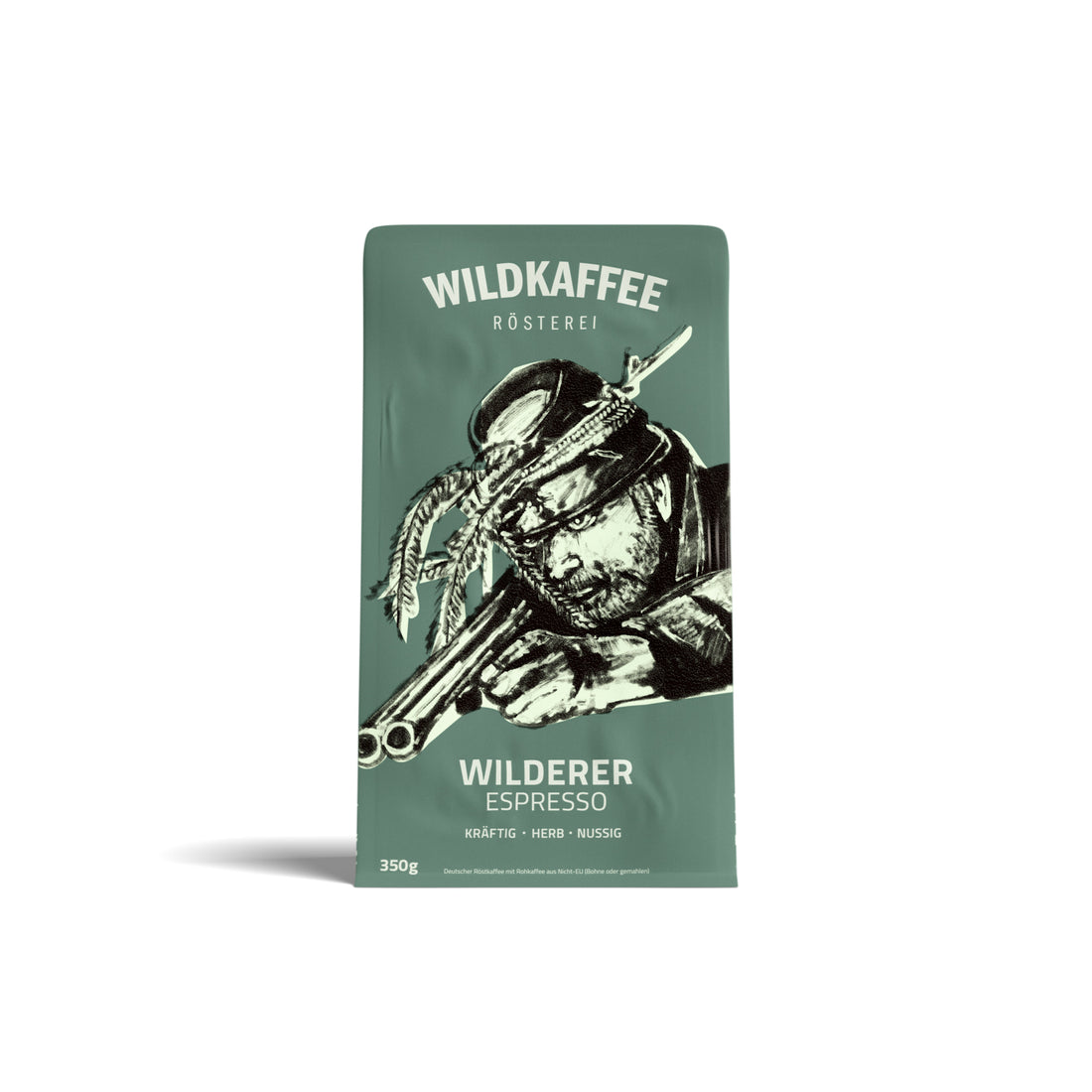The main differences between Arabica and Robusta
We'll discuss the individual differences between the two coffee varieties in more detail in the next sections. While there are other coffee varieties, such as Coffea Liberica or Coffea Excelsa, which are also sold roasted, they each account for only about 1 percent of the market. Arabica accounts for a good two-thirds, and Robusta for one-third of the global market.
Taste and aroma of Arabica and Robusta coffee
Arabica coffee is characterized by a mild, sweet flavor with fruity and floral notes. It has a balanced acidity and a complex aroma profile. Arabica coffee is often portrayed as superior to Robusta, but this is essentially untrue. Both coffees are available in the highest quality.
Robusta coffee, on the other hand, has a stronger, earthier flavor with a slightly bitter aftertaste. It often contains nutty or chocolatey notes and is lower in acidity. Therefore, it is often used in espresso blends, as it makes the coffees beautifully dark and strong. Robusta beans also produce a wonderful crema in a portafilter machine.
The caffeine content of Arabica and Robusta
Robusta contains about twice as much caffeine as Arabica. While Arabica coffee has between 1.2% and 1.5% caffeine, Robusta can contain up to 2.7%. Robusta's high caffeine content not only makes it more intense in flavor but also more resistant to pests, as caffeine acts as a natural insecticide. Due to its higher caffeine content, Robusta is often used in blends to achieve a stronger stimulant effect.
Arabica vs. Robusta – Growing areas and climatic conditions
Especially when it comes to the optimal growing and climatic conditions for them, the two varieties, Robusta and Arabica, could not be more different.
- Arabica prefers to grow at altitudes between 600 and 2,000 meters, mostly in Central and South America, but also in East Africa and Asia (and also in other countries).
- Robusta thrives at lower altitudes below 600 meters and is more resistant to disease and climatic fluctuations. The main growing areas are Vietnam, Brazil, and Africa. Our Robusta, for example, comes from India from Hoysala Coffee & Spices.

Visual differences between Arabica and Robusta beans
Arabica and Robusta beans differ not only in taste but also in their appearance:
- Arabica beans are oval-shaped, have a curved groove in the center, and a smooth surface. Due to their lower caffeine content, they are more sensitive to environmental influences and require special care.
- Robusta beans are smaller, rounder, and have a straight groove in the center. They contain more caffeine, making them more resilient and producing a denser crema when used in espresso.
Price and market share of Arabica and Robusta coffee
Arabica coffee is more expensive due to its more complex cultivation and flavor profile. The complex cultivation, demanding growing conditions, and higher susceptibility to disease contribute to the higher price. It accounts for approximately 60 to 70% of global coffee production.
Robusta, on the other hand, is more affordable because it is more resilient and produces larger yields. It is often used for instant coffee or espresso blends because it provides a richer crema and more body. Robusta accounts for about 30–40% of global coffee production and is particularly widespread in mass production.
Processing and roasting
The processing of the beans has a major influence on the flavor. Arabica is often processed using the more elaborate "washed" method, which preserves its delicate fruity notes. Robusta, on the other hand, is more often processed dry, resulting in an earthier and more robust flavor.
The roasting also differs: Arabica beans are often roasted more gently to preserve the delicate aromas, while Robusta tends to be roasted darker to balance out the bitterness and produce a deeper crema.
Health aspects of Arabica and Robusta coffee
Arabica contains less caffeine but more antioxidants, which can have anti-inflammatory effects. Robusta, on the other hand, has a higher caffeine and chlorogenic acid content, making it more attractive to people seeking a stronger stimulant. Those sensitive to caffeine should opt for Arabica.
The coffee industry uses Arabica and Robusta
Arabica is often used in high-quality specialty coffees because it offers a more refined flavor profile. It's especially popular for filter coffee, French press, or pour-over brewing.
Robusta, on the other hand, is the preferred choice for espresso blends, as its high caffeine content ensures a strong crema. It is also used in instant coffee and inexpensive supermarket blends.

Practical tips for preparing and blending Arabica and Robusta coffee
Arabica and Robusta also differ in their appropriate preparation methods and blending ratios. Here's just a brief overview.
The best preparation
- Arabica is particularly well suited for filter coffee , pour-over, French press and AeroPress, as these methods emphasize the delicate aromas and balanced acidity.
- Robusta is ideal for espresso , mocha and portafilter machines as it delivers a strong crema and an intense aroma.
Arabica and Robusta blends for the perfect coffee experience
- Espresso blends: A combination of 80% Arabica and 20% Robusta creates a perfect balance between mild aroma and strong crema.
- Filter coffee: Pure Arabica blends are best for bringing out the subtle nuances of the beans.
- Strong stimulant: If you like it intense, you can also try blends up to a 50:50 ratio of Arabica and Robusta.
Conclusion for Arabica and Robusta coffee
Arabica and Robusta each have their own strengths and are suited to different tastes and purposes. While Arabica is prized for its delicate, fruity aroma and mild acidity, Robusta offers a more intense flavor with a higher caffeine content. The choice between the two depends on individual preference: Those who prefer a smooth, complex coffee should opt for Arabica, while lovers of bold, caffeine-rich blends can choose Robusta or a combination of both. Ultimately, the world of coffee offers a wide variety worth exploring.




